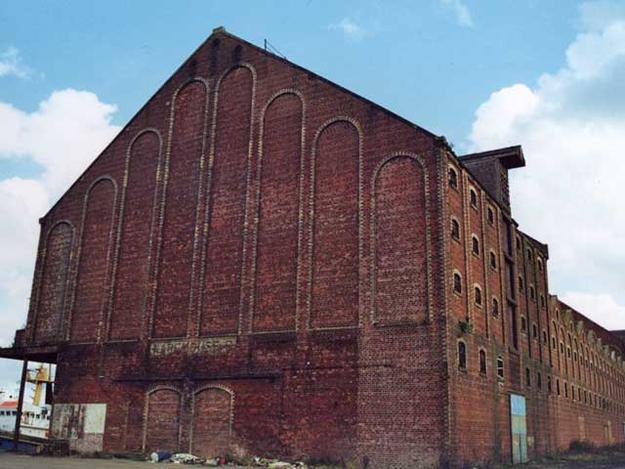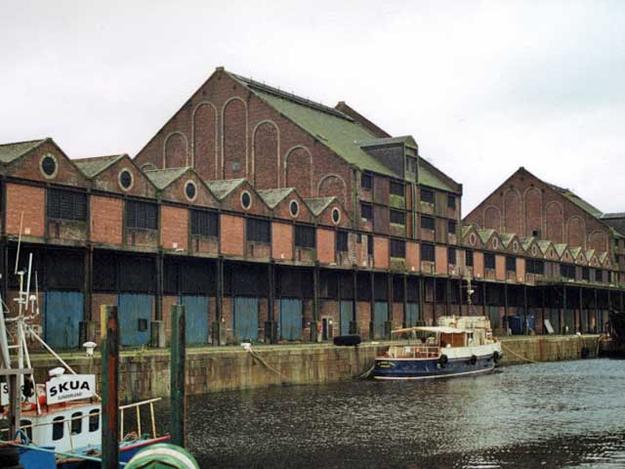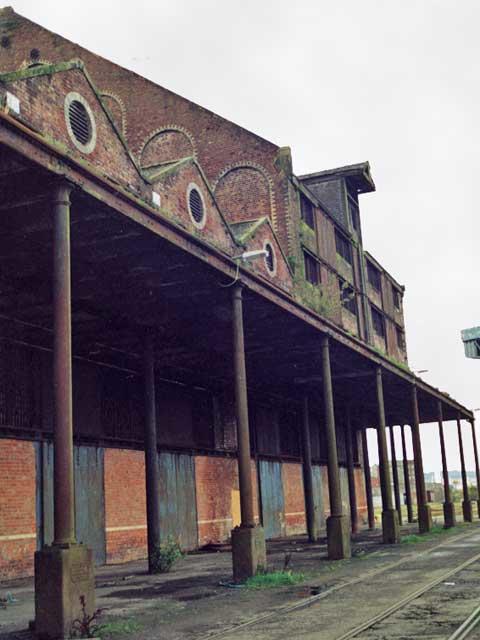Greenock Sugar Warehouses
2002 World Monuments Watch
From the eighteenth through early-twentieth centuries, warehouses in Great Britain were often designed by architects of note – usually as part of an overall dock plan – a far cry from the perfunctory prefabricated nonentities turned out today. The extensive docks of seaport cities – London, Glasgow, Newcastle, and Liverpool – offered architects the chance to build what were, in effect, secular monuments to industry, and, with the necessity of security from theft and fire, spurred them to innovations in construction. The Greenock Sugar Warehouses, on the Clyde River near Glasgow, are exemplary, being part of the the James Watt Dock (1879–1886), designed by Walter R. Kinipple. Their red-brick fabric contrasts vividly with yellow-brick ornamentation at windows, corners, pilasters, and gables, a nod from the architect at the art critic, John Ruskin’s celebration of medieval Italian polychrome. The vast cast-iron windows – rectangular, arched, or circular – with small mullioned panes anticipate the uses of glazing in such Modernist icons as Bauhaus architect Walter Gropius’ Fagus Factory, or Pierre Chareau’s Maison de Verre. The eight-story warehouses, which were built for the second-largest sugar company in the world, are a rare, early example of structural cast iron externally expressed. The James Watt Dock is the most complete nineteenth-century wet dock in Scotland; its titan cantilever crane of 1907, the oldest in existence. Today, however, the dockowner is seeking to demolish the buildings, which, because of their ruinous state, are considered a blight on the waterfront. The roofs have deteriorated and water penetration has rendered the wooden floor dangerous.
Since the Watch
On June 5, 2006, a fire broke out on the James Watt Dock, destroying part of the former sugar warehouse. Despite this adversity, and even though parts of the building were demolished in its aftermath, the site is currently being repaired and adapted to form the centerpiece of a multi-use urban redevelopment project. January 2011



